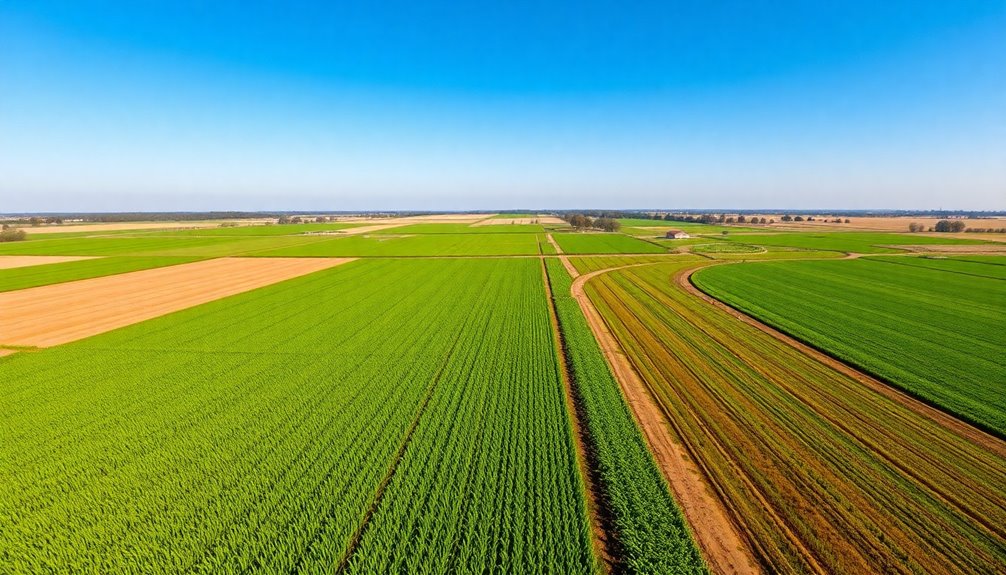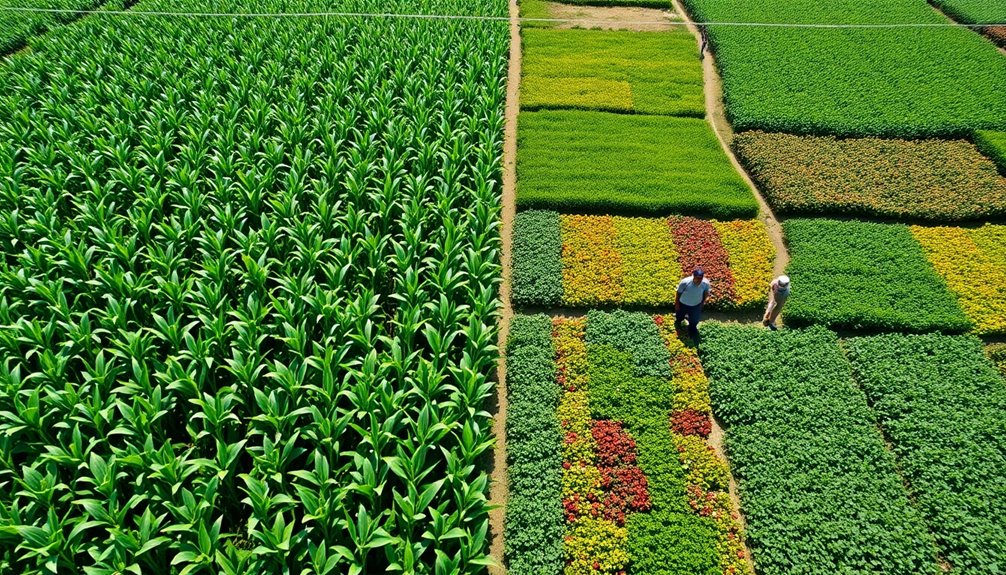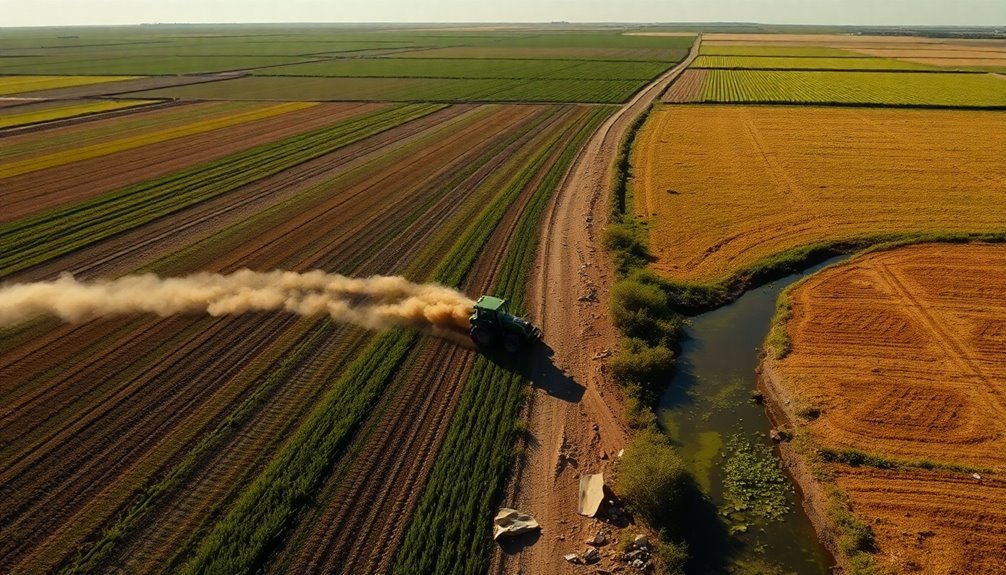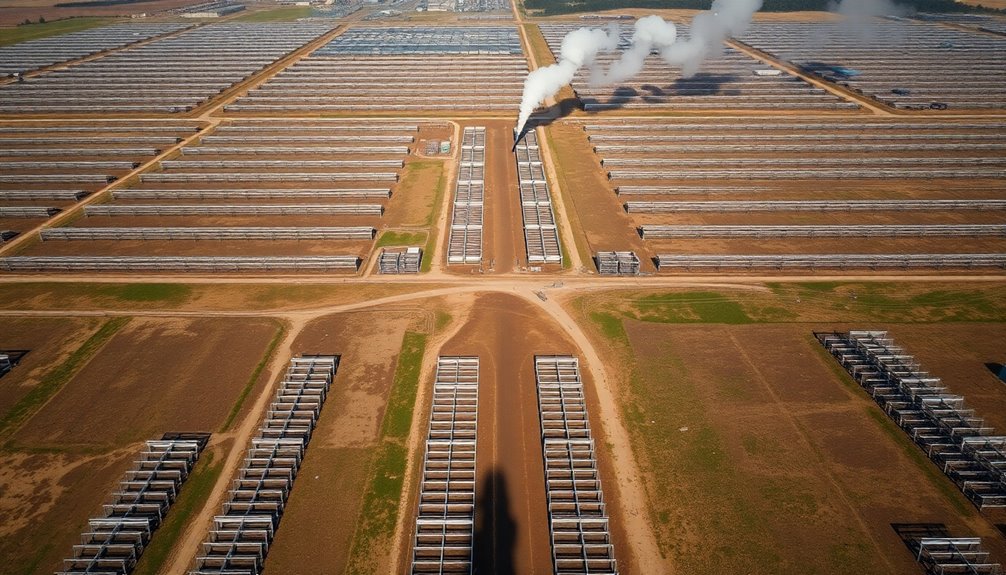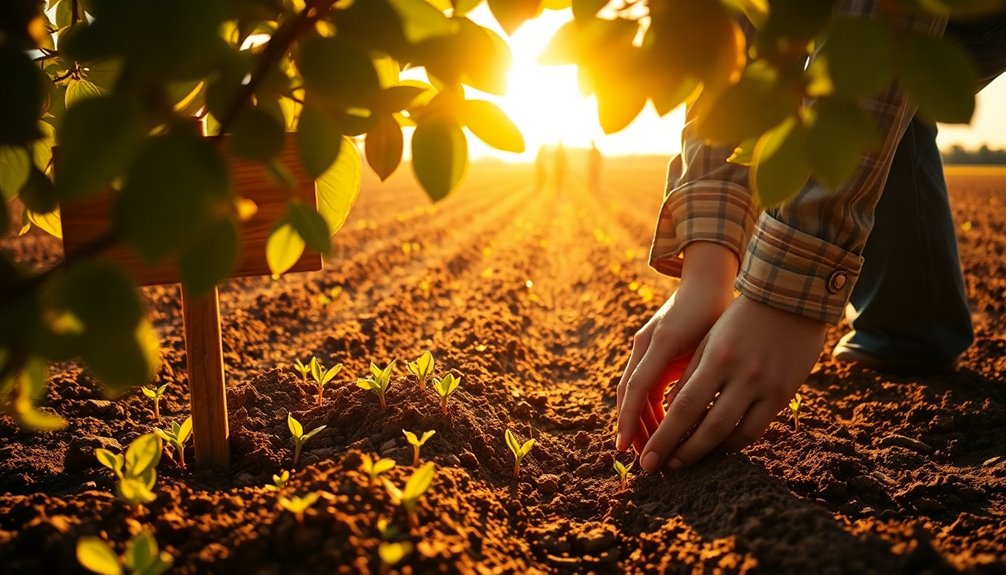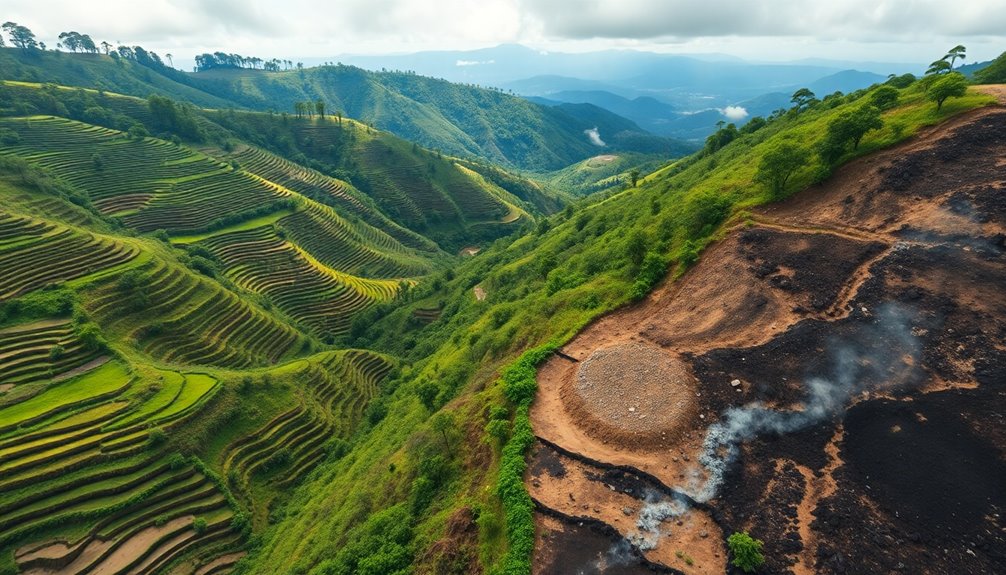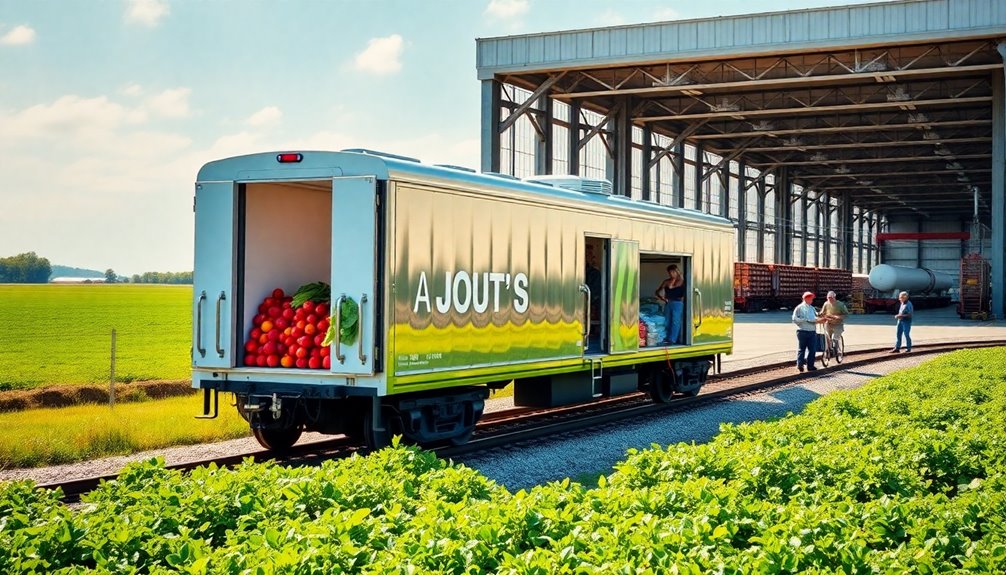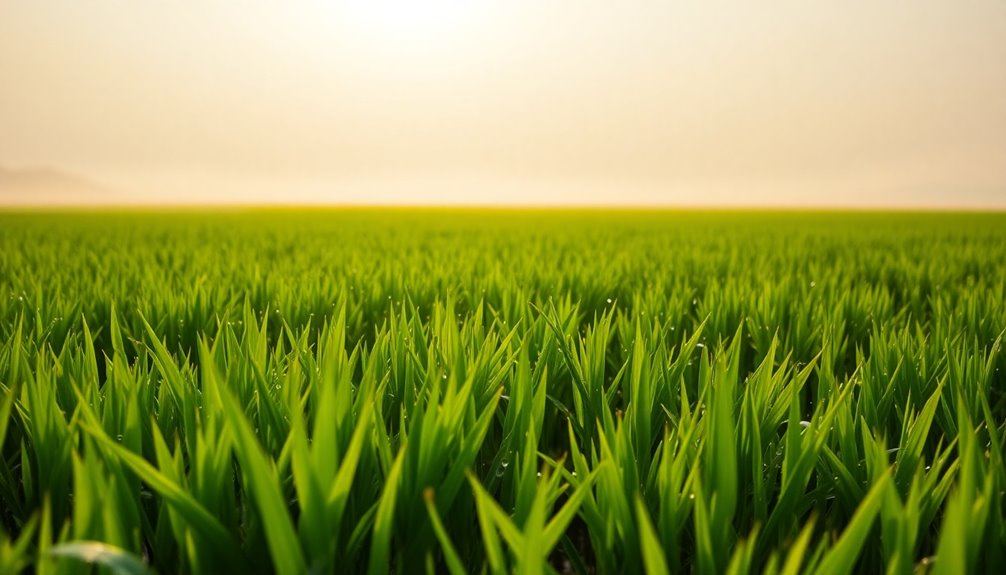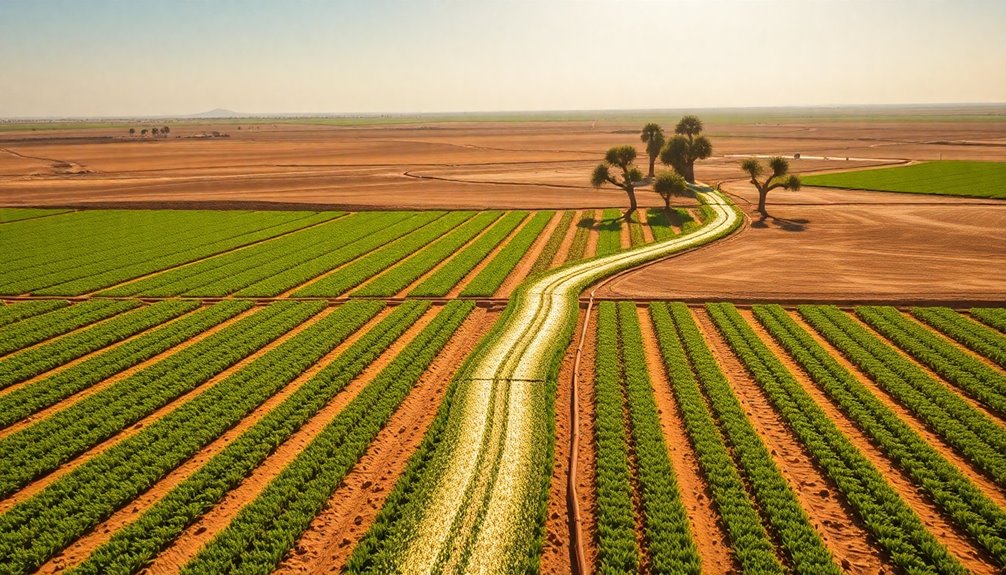Commercial farming is all about large-scale crop and livestock production for market sale. You'll use advanced technologies that boost efficiency, like GPS-guided machinery and automated irrigation systems. This type of farming focuses on high-demand crops, leading to lower production costs through economies of scale. However, it comes with challenges, such as environmental impacts and social equity issues. As you explore further, you'll see how diverse farming practices, from dairy to aquaculture, interact with sustainability and labor conditions. Understanding these dynamics can give you deeper insights into agriculture today and its future.
Key Takeaways
- Commercial farming involves large-scale crop and livestock production primarily aimed at market sale, utilizing advanced technology for efficiency.
- It specializes in high-demand crops like corn, soybeans, and wheat, driving economies of scale that lower production costs.
- Techniques such as precision agriculture and automated irrigation enhance resource management, increasing overall yields and sustainability.
- Environmental challenges include deforestation, soil degradation, and water pollution due to chemical use, impacting biodiversity and climate resilience.
- Socially, commercial farming can lead to rural depopulation, exploitative labor practices, and economic disparities for small family farms.
Definition of Commercial Farming
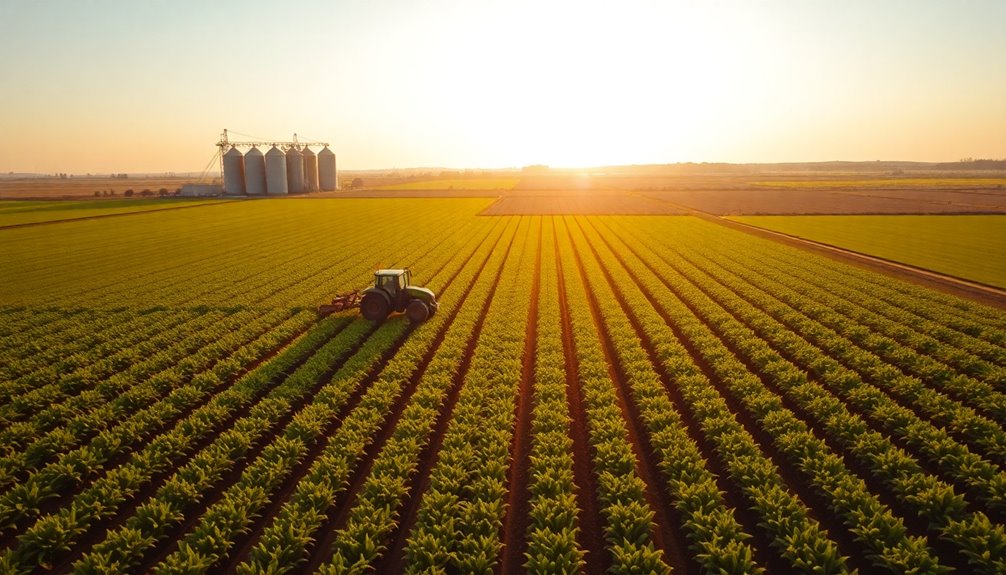
Commercial farming, often referred to as commercial agriculture, centers on the large-scale production of crops and livestock intended for market sale instead of personal use.
This approach employs advanced technology and innovative agricultural practices, enabling you to maximize efficiency and output. By focusing on high-demand crops like corn, soybeans, and wheat, you can take advantage of economies of scale, which often results in lower production costs compared to smaller farms.
However, while contributing considerably to global food security, commercial agriculture also faces challenges related to environmental sustainability and social equity.
Effective livestock management and careful crop production are essential to maintaining a balance between profitability and responsible farming practices, ensuring a stable food supply for the future.
Key Features of Commercial Agriculture

In commercial agriculture, you're harnessing advanced technology to boost efficiency and yield.
By specializing in crops that meet market demand, you can maximize profits and stay competitive.
This strategic approach not only enhances production but also aligns with consumer preferences.
Advanced Technology Utilization
Harnessing advanced technology transforms the landscape of agriculture, making it more efficient and productive.
You'll find that commercial farming increasingly relies on innovations to enhance various aspects of crop production. Here are some key features:
- Precision agriculture improves resource management by using GPS-guided machinery.
- Automated irrigation systems optimize water usage, boosting crop yields.
- Modern machinery reduces labor costs and time, facilitating large-scale operations.
- Data analytics provides insights into weather patterns and soil conditions for informed decision-making.
- Farm management software streamlines operational workflows, tracking inventory and monitoring crops.
- The integration of energy-efficient models ensures that farming operations can also reduce operational costs while benefiting from sustainable practices.
Market Demand Specialization
Market demand specialization plays an essential role in shaping the landscape of commercial agriculture. By focusing on high-demand crops like corn, soybeans, and wheat, you can maximize profitability and align with market trends.
Using mechanization and advanced technology, including GPS and precision farming tools, enhances efficiency and productivity in your operations. Economies of scale allow you to produce food more cheaply than small-scale farms, driving down costs.
Emphasizing market-oriented production often leads to monoculture practices, where you grow a single crop extensively to meet consumer demand. Furthermore, integrating commercial agriculture into global supply chains supports export-oriented production, greatly influencing local economies and rural livelihoods.
This strategic approach guarantees you stay competitive in the ever-evolving agricultural market.
Types of Commercial Farming
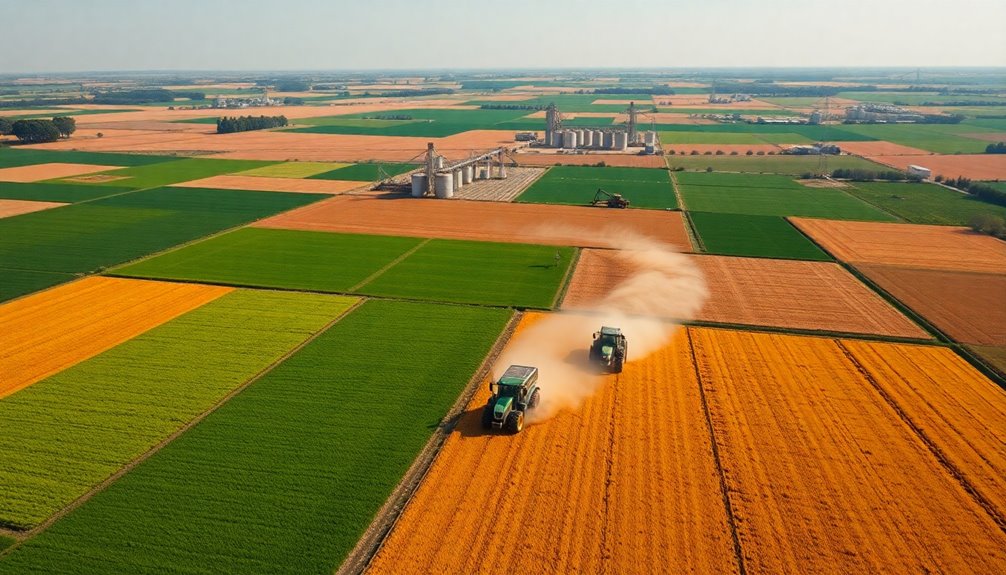
Commercial farming encompasses a variety of specialized practices designed to maximize production and efficiency.
Here are some key types of commercial agriculture you should know:
- Dairy Farming: Focuses on large-scale production of milk and dairy products.
- Grain Farming: Involves extensive cultivation of staple crops like wheat and corn.
- Livestock Ranching: Centers on raising animals for meat and other products.
- Poultry Farming: Specializes in producing poultry products, including meat and eggs.
- Aquaculture: Involves farming fish and aquatic organisms, contributing to sustainable food production.
These types of commercial farming utilize large-scale cultivation techniques and sustainable practices to meet global food demands efficiently.
Each type plays a vital role in the overall food production landscape.
Environmental Challenges
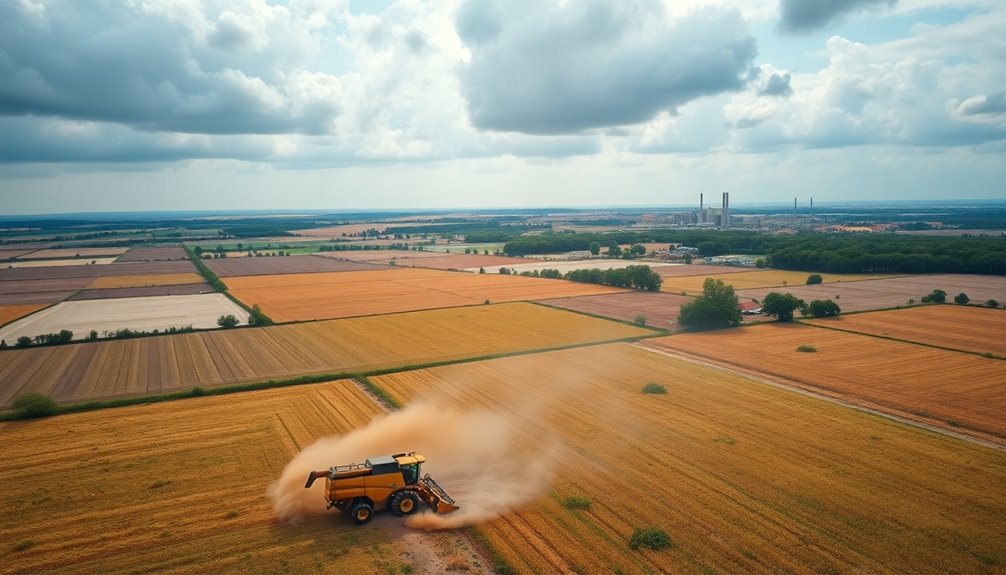
The environmental challenges posed by large-scale farming are significant and multifaceted. Deforestation for crop production and livestock grazing leads to habitat loss and a decline in biodiversity.
You might notice soil degradation as intensive farming practices deplete nutrients and erode soil health, which ultimately impacts agricultural productivity. The excessive use of chemical fertilizers and pesticide use often causes water pollution, affecting local ecosystems and drinking supplies through runoff.
Monoculture practices reduce biodiversity, making crops more vulnerable to diseases and pests, threatening food security. Additionally, climate change introduces unpredictable weather patterns and extreme events, disrupting sustainability in large-scale agriculture.
Addressing these challenges is vital for the future of farming and the health of our planet.
Social Impacts and Labor Practices
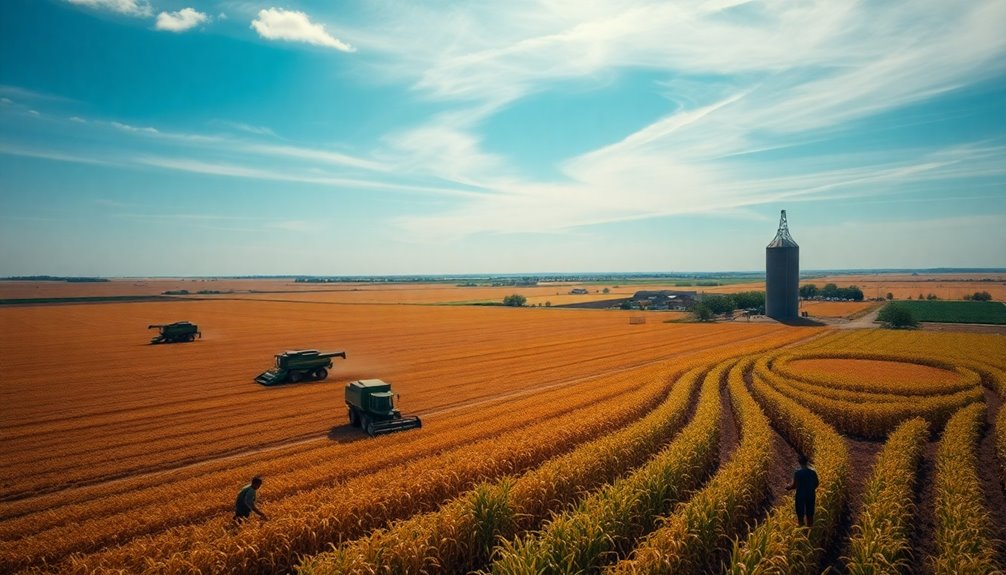
In the wake of large-scale agriculture's rise, rural communities face significant social impacts and labor challenges. Here's what you should know:
- Rural depopulation occurs as mechanization minimizes job opportunities.
- Labor conditions in commercial farming often involve exploitative practices.
- Workers frequently endure low wages and poor working conditions.
- Small family farms struggle against economic disparities created by consolidation.
- Traditional agricultural practices and local knowledge are being overshadowed.
These changes disrupt the social fabric of these communities, as the shift toward commercial farming alters local dynamics.
Education and training programs are essential in addressing labor conditions, equipping workers with the skills needed for modern farming.
Recognizing these issues is critical for fostering a more equitable agricultural landscape.
Sustainability and Future Directions
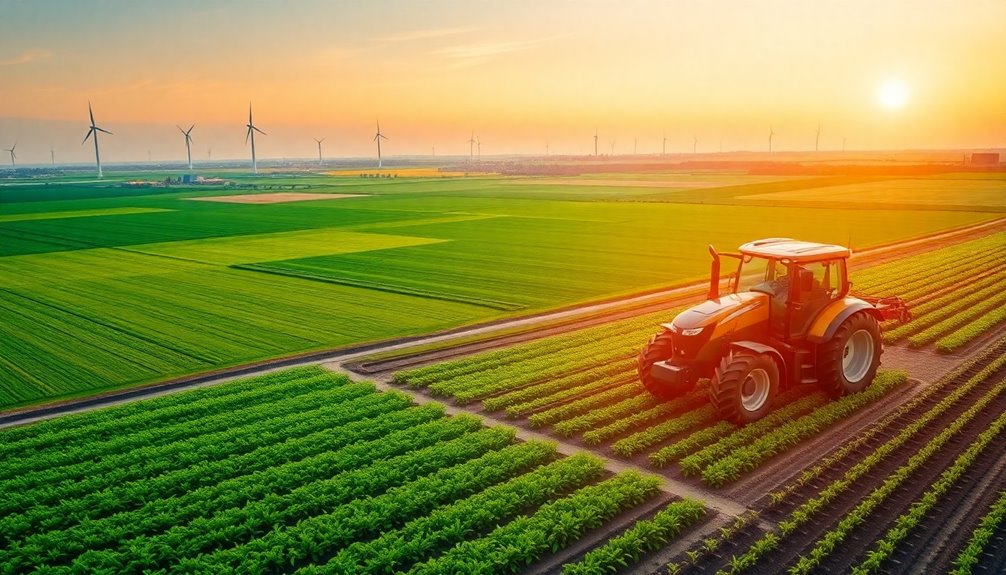
Sustainability in agriculture is more vital than ever, as the industry grapples with environmental challenges and the need for efficient food production.
Embracing sustainable farming practices like agroecology and regenerative agriculture enhances soil health and promotes biodiversity. Technological advancements, including precision farming, optimize resource use, supporting long-term sustainability and minimizing environmental impacts.
Furthermore, innovative solutions like container and vertical farming are reshaping urban agriculture, making efficient land use possible. Community-supported agriculture (CSA) initiatives further connect consumers with local farms, fostering sustainable practices and cutting down on food transportation emissions.
Collaborative efforts among government, private sectors, and communities are essential for implementing these methods, ensuring agriculture remains resilient against climate change while meeting the growing demand for food.
Frequently Asked Questions
What Is Large-Scale Commercial Agriculture?
Large-scale commercial agriculture is all about producing crops and livestock on a massive scale, mainly for market sales.
You'll notice that this method relies heavily on advanced technology and machinery to boost output. It often focuses on high-demand crops like corn and soybeans in monoculture systems.
While this approach can lower food prices and meet global demand, it also raises concerns about environmental impacts, such as soil degradation and loss of biodiversity.
What Is Commercial Farming?
When you think about commercial farming, you're considering large-scale agriculture focused on producing crops and livestock for sale.
You'll notice farmers utilize advanced technology and machinery to boost efficiency and yields. This system often relies on monoculture practices, growing high-demand cash crops like corn and soybeans.
While it can lower food production costs, you should also be aware of the environmental challenges, such as soil degradation and loss of biodiversity, that come with it.
What Is Dynamic Agriculture?
Imagine you're a farmer using drones to monitor your crops. That's dynamic agriculture in action!
It's all about adapting farming practices based on market needs and technological advancements. You leverage tools like precision farming to boost productivity while ensuring sustainable practices.
What Are Some Benefits to Large-Scale Commercial Farming?
Large-scale commercial farming offers several benefits you'll appreciate.
It lowers food production costs, making groceries cheaper for you while increasing market availability. You'll notice enhanced crop quality thanks to advanced technology and precision farming techniques, which also promote sustainability.
Additionally, these farms create jobs in rural areas, boosting local economies not just in agriculture but in transportation and processing as well.
Conclusion
In the vibrant tapestry of commercial farming, you see vast fields stretching like a patchwork quilt under the sun, each crop a brushstroke of nature's palette. Yet, behind this beauty lies a complex world of challenges and impacts. As you navigate this landscape, remember the responsibility we share to cultivate not just profits, but a sustainable future. By embracing innovation and ethical practices, you can help guarantee that the soil remains rich and the harvest bountiful for generations to come.

